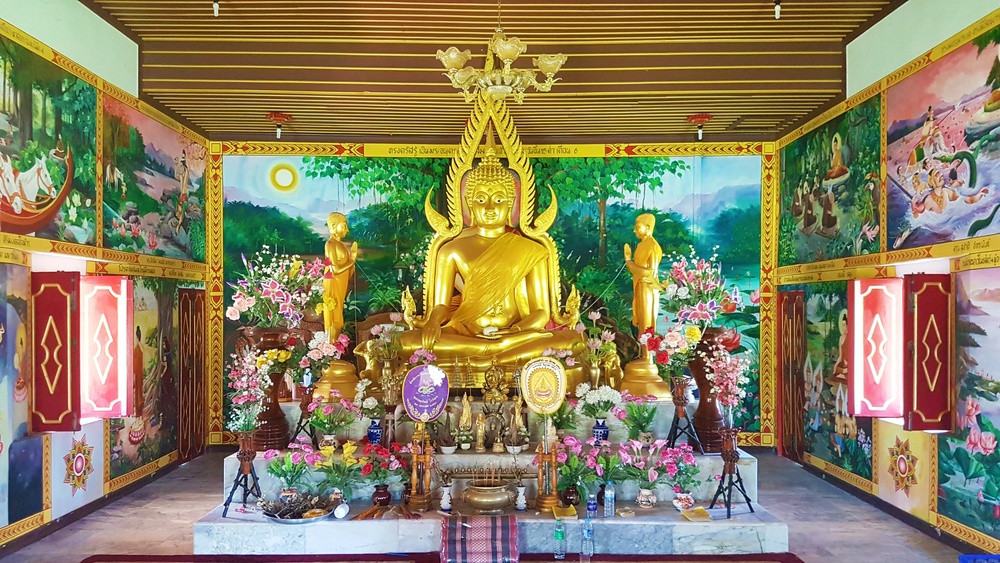India, the land where Buddhism originated, is dotted with sacred sites that narrate the story of Prince Siddhartha’s transformation into Lord Buddha and his journey of enlightenment, teachings, and Mahaparinirvana. For spiritual seekers, history enthusiasts, and travellers, exploring these Buddhist tourist destinations in India offers an enriching experience that blends peace, philosophy, and culture. Here is a guide to the most sacred sites of Buddha’s life that you must visit.
1. Lumbini (India-Nepal Border Connection)
Although Lumbini, the birthplace of Buddha, is in Nepal, it is closely connected to the Buddhist circuit of India. Many pilgrims visiting Indian sites also travel to Lumbini, which is just a few hours from Sarnath and Kushinagar. It houses the Maya Devi Temple, Ashokan Pillar, and monasteries from various Buddhist countries, marking the beginning of Buddha’s life journey.
2. Bodh Gaya, Bihar
The most important of all Buddhist tourist destinations in India, Bodh Gaya is where Prince Siddhartha attained enlightenment under the Bodhi Tree to become Buddha. The Mahabodhi Temple Complex, a UNESCO World Heritage Site, stands as a symbol of spiritual awakening. Pilgrims meditate under the Bodhi Tree, visit the Vajrasana (Diamond Throne), and attend prayer sessions in monasteries built by Buddhist communities from Thailand, Bhutan, Japan, and Sri Lanka. Bodh Gaya radiates a divine energy that leaves every visitor feeling peaceful and fulfilled.
3. Sarnath, Uttar Pradesh
After enlightenment, Buddha travelled to Sarnath, near Varanasi, where he gave his first sermon, setting in motion the Dharmachakra (Wheel of Dharma). The Dhamek Stupa marks this historic event. Other attractions include the Ashokan Pillar, Mulagandha Kuti Vihar with its beautiful frescoes, and the Sarnath Museum, which houses the famous Lion Capital of Ashoka – India’s national emblem. Sarnath is a serene destination where travellers can reflect upon Buddha’s teachings in peaceful surroundings.
4. Kushinagar, Uttar Pradesh
Kushinagar is where Buddha attained Mahaparinirvana (final nirvana) after his death. The Mahaparinirvana Temple enshrines a massive reclining Buddha statue depicting his last moments. The Ramabhar Stupa, where his cremation took place, and monasteries built by countries like Thailand, Myanmar, and Vietnam create a strong spiritual atmosphere. Visiting Kushinagar evokes deep reflection on life’s impermanence, compassion, and liberation.
5. Rajgir, Bihar
Rajgir was an important place during Buddha’s life where he spent several rainy seasons meditating and teaching. Griddhakuta Hill (Vulture’s Peak) is where he delivered several important sermons, including the Lotus Sutra. The Japanese Peace Pagoda (Vishwa Shanti Stupa), Venuvana Monastery, and hot springs make Rajgir a destination that beautifully combines spirituality with natural beauty. Travellers often take the ropeway ride to the hilltop stupa, enjoying panoramic views of the valley.
6. Nalanda, Bihar
Nalanda was the ancient seat of Buddhist learning between the 5th and 12th centuries. It was home to Nalanda University, attracting students from China, Japan, Korea, and Southeast Asia. The ruins of monasteries, temples, and lecture halls tell tales of intellectual and spiritual pursuits. The Nalanda Archaeological Museum preserves sculptures and relics excavated from the site, while Nava Nalanda Mahavihara continues Buddhist studies today. Nalanda is a must-visit for those interested in Buddhism’s academic and cultural heritage.
7. Vaishali, Bihar
Vaishali is where Buddha delivered his last sermon before attaining Mahaparinirvana. It is also known for being the place where the second Buddhist council was held after Buddha’s death. The Ashokan Pillar, Buddha’s Relic Stupa, and Abhishek Pushkarini (coronation tank) are important sites here. Vaishali is peaceful and uncrowded, making it ideal for quiet reflection and meditation.
8. Sravasti, Uttar Pradesh
Sravasti is where Buddha spent 24 rainy seasons and performed many miracles. Jetavana Monastery, where he resided, has an Ananda Bodhi Tree believed to have been planted by his disciple Anathapindika. Other attractions include the ruins of monasteries, Angulimala Stupa, and sites narrating Buddha’s life events. Sravasti remains an offbeat yet deeply spiritual destination for pilgrims.
9. Amaravati, Andhra Pradesh
Amaravati was once a major Buddhist centre in South India. The Amaravati Stupa, dating back to the 2nd century BCE, has intricate carvings depicting Buddha’s life and Jataka tales. The Amaravati Archaeological Museum nearby houses sculptures and relics found from the site. Travelling to Amaravati offers a unique perspective on how Buddhism flourished in southern India.
10. Tawang, Arunachal Pradesh
Tawang is famous for the magnificent Tawang Monastery, the largest in India and second-largest in the world. Perched at an altitude of 10,000 feet, it houses a massive golden Buddha statue and ancient scriptures. Its serene environment, prayer chants, and festivals like Losar make Tawang not only spiritually significant but also culturally vibrant. The monastery offers panoramic views of the Tawang valley, making it a visual and spiritual delight.
Why Visit These Sacred Sites?
- Spiritual Enrichment: Experience meditation and prayer in places where Buddha walked and taught.
- Cultural Immersion: Witness rituals, architecture, and traditions of Buddhist communities across India.
- Historical Insights: Learn about the rise of Buddhism, its spread to other Asian countries, and its impact on Indian society.
- Inner Peace: The calm and serene environment of these sites offers a much-needed break from modern life’s chaos.
- Diverse Experiences: From ancient ruins of Nalanda to Himalayan monasteries of Tawang, each destination offers a different facet of Buddhist heritage.
Conclusion
These Buddhist tourist destinations in India are not just religious sites but living testimonies to the life and teachings of Buddha. Whether you seek peace, knowledge, or cultural exploration, visiting these sacred sites will leave you spiritually enriched and historically informed. Embark on this pilgrimage to discover the timeless wisdom of Buddha and the serene beauty of India’s Buddhist heritage.

